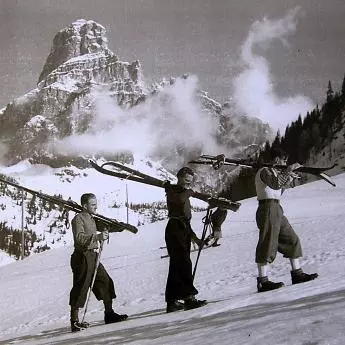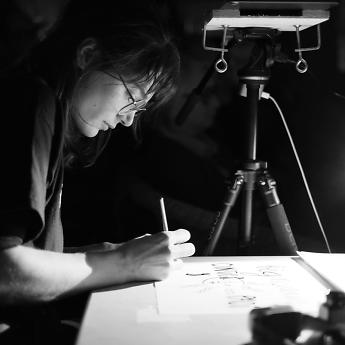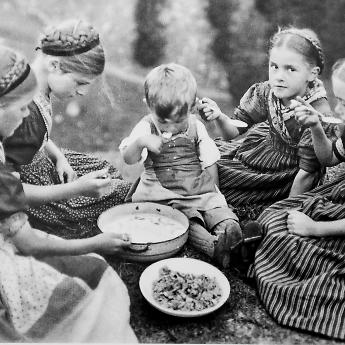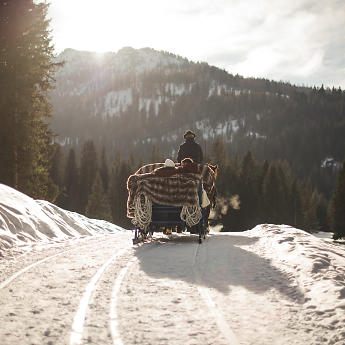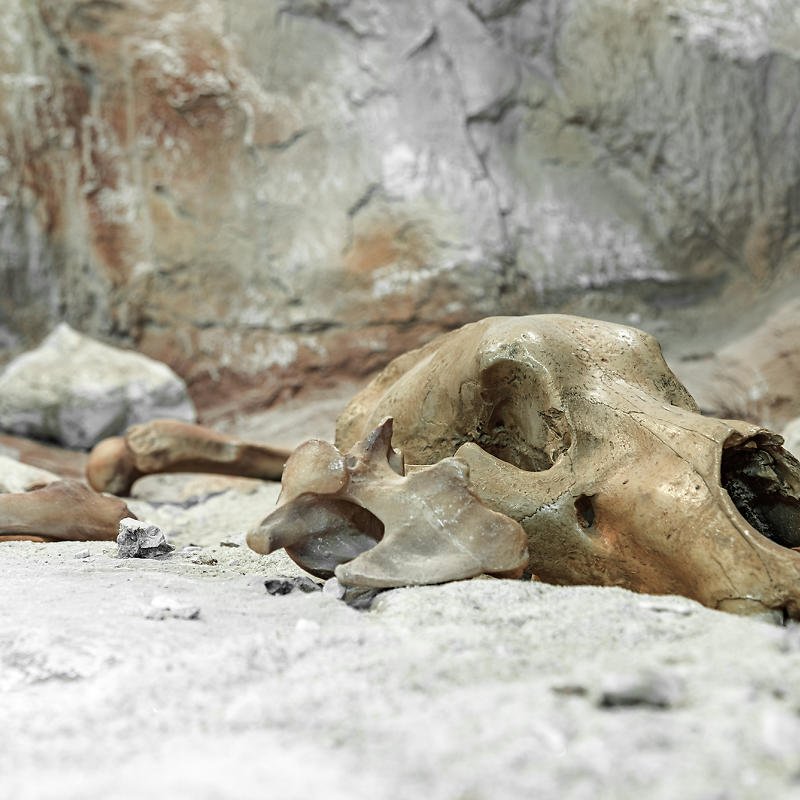
A home fit for a cave bear
The fascinating story of Ursus ladinicus
Once you’ve been to the Dolomites, their sight is burned in your memory. Each visit only reaffirms what was evident at first glance: these mountains really are that beautiful, and they don’t get any uglier the more you look at them. It is physically – perhaps even scientifically – impossible not to be captivated by these white giants.
The sight of them evokes a feeling not unlike gazing at a postcard of a remote Caribbean island, where a massive prehistoric reptile lounges lazily on pristine white sand beneath the words “Greetings from Paradise”... Looking at the rock formations from a towering Dolomite peak or the valley below, the mere thought seems absurd. Yet, it’s true: once, giant reptiles basked here, soaking in the sun in a tropical setting. In this case, “once” means more than 200 million years ago, and “tropical setting” refers to a time when, instead of today’s jagged peaks, small paradisiacal islands rose from the primordial waters of the Tethys Ocean.
Yes, the Dolomite region was once sea – a sandy beach, a seabed, a home to countless species that now send us greetings from the past in the form of fossils. Let anyone dare say that rocks are not alive. A stone does not reproduce, has no cells and does not metabolise. But isn’t it the stories and memories that keep all beings and things on this earth alive? And the Dolomites are surely unrivalled storytellers. From shallow lagoons to underwater creatures and sunbathing reptiles, countless stories can be discovered in the rock of this special place. Among their many tales, one tells of wild lions and vegetarian bears.
The discovery of the Conturines Cave
There once was an adventurous and curious hotelier from Corvara named Willy Costamoling. On an unassuming September morning in 1987, this man from Val Badia set out for the peak of the Conturines in search of fossils. The Ladin people – fortunate enough to live in the very place where prehistoric reptiles once basked in the sun – have long understood the Dolomites’ gift of storytelling. Naturally, they are always on the lookout for new material.
But on that particular day, Costamoling found no fossils. Instead, he stumbled upon the entrance to a cave. Intrigued, he returned to the valley, only to set out again the next day, equipped with a rope and a head torch. He ventured into the darkness, climbing nearly a hundred metres up a steep and shadowy passage, where he encountered an unusual stalactite, which he immediately named Vardian – Ladin for “guardian”.
Behind this guardian, thousands of bones littered the cave floor. After the initial shock of this extraordinary discovery, Costamoling, still amazed, packed his rucksack full of bones and carried them back down into the valley. By sheer chance, he soon crossed paths with Professor Gernot Rabeder, a speleologist (someone who studies caves), who quickly recognised the bones as belonging to cave bears. The following year, Rabeder and a team of researchers from the University of Vienna began systematically excavating the cave. Every summer for several years, thousands of bones were carefully unearthed.
Their analysis revealed that the bones belonged to a cave bear, a previously unknown subspecies of Ursus spelaeus. In honour of the Ladin people, the present-day guardians of this area, the bear was named Ursus spelaeus ladinicus – simply Ursus ladinicus to locals and true admirers.

The Winnie-the-Pooh of the mountains
Research on the bones from the Conturines Cave revealed that Ursus ladinicus was an impressive creature, weighing up to 1,200 kilograms and reaching a length of 2.6 metres. Like all its relatives, this cave bear was a strict herbivore. Over thousands of years, evolution had equipped it with the perfect set of teeth for its plant-based diet – large, flat molars with small cusps on the crowns – ideal for grinding up vegetation. Like modern cows, Ursus ladinicus grazed slowly and peacefully on the rich mountain vegetation. The bear’s favourite food likely consisted of soft Alpine herbs and leaves, as tougher grasses would not have been good for its teeth.
But Ursus ladinicus was not only a peaceful grazer; it was also a master of relaxation. The remains found in the Conturines Cave – around sixty adult cave bears and many bear cubs – suggest that this was a regular hibernation residence. As a gentle bon vivant, this cave bear species understood the restorative power of sleep. The bears would retreat into the cave toward the end of autumn, only emerging from their slumber when the first tender Alpine herbs began to sprout outside. The cave was not a graveyard for the Ursus ladinicus; on the contrary, female bears even gave birth to their young here during hibernation. Interestingly, Ursus ladinicus had no qualms about sharing space with the opposite sex. Unlike other caves, where either male or female bears tended to dominate, the Conturines Cave comfortably housed both together under one roof. The bones found inside the cave likely belonged to those who died of old age or illness during the winter retreat, their remains accumulating over millennia.

Heated times and hunters
Alongside the many Ursus ladinicus bones, researchers also uncovered the partial remains of a cave lion (Panthera spelaea). Among the findings were parts of a lower jaw and fragments of an upper jaw with some teeth. Cave lions were widespread between approximately 370,000 and 12,400 years ago and were no strangers to the Dolomites. These powerful predators were likely Ursus ladinicus’ biggest threat, forcing these gentle herbivores to retreat into the safety of the cave not only for hibernation but also as a means of escape. Unlike the bears, however, cave lions didn’t live in the caves – they used them purely for hunting.
Nowadays, when imagining the bright mountain peaks of the Dolomites, one might instinctively picture something akin to the famous rock from “The Lion King”. Yet, it is almost unfathomable that these majestic predators once roamed the ski slopes of today. The presence of cave lions and bears in this region suggests that the climate must have been significantly milder than it is now. Otherwise, it would have been impossible for the easygoing Ursus ladinicus to find the tasty herbs it relied on, especially at an elevation of 2,700 metres – the current altitude of Conturines Cave.
Cave paintings in various parts of the world confirm that the cave lion lived around 36,000 years ago, sharing its era with Neanderthals and early modern humans. Meanwhile, radiocarbon dating, one of the most reliable methods for determining the age of organic material, has shown that the bear bones from the Conturines Cave are over 50,000 years old. This exceeds the upper limit of what can be measured using this technique, leaving the exact timeline of when bears and lions inhabited what is now Ladinia uncertain. Ongoing research into the climatic conditions of that time may eventually provide clues – not only about the ancient past but also about the future of the Dolomites in the face of climate change. What remains unclear is why – and exactly when – Ursus ladinicus vanished from the picturesque landscape.
What is certain, however, is that these unique mountains still hold many untold stories within their layers of sediment. The story of Ursus ladinicus can be discovered at the museum of the same name in San Cassiano. And for those who wish to follow in the footsteps of the cave bear, the best way is to visit its former winter home and take a guided tour of Conturines Cave.
Elisa Barison works as a freelance curator and publicist. She studied History of Art and journalism at the University of Vienna and earned an MBA in Cultural Management at ICART in Paris. She is interested in the interface between processes and rural and urban spaces, and in addition to working in the cultural sector she currently produces wine and grows flowers with her partner in Bressanone.



































